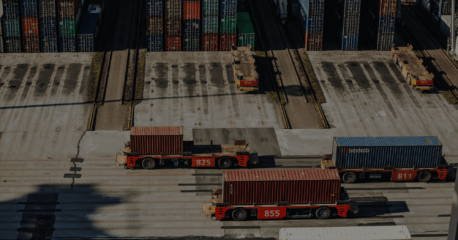Countries worldwide are enacting laws to protect against forced labor. Key regulations include the Uyghur Forced Labor Prevention Act (UFLPA), the Australia Modern Slavery Act, the Canada Modern Slavery Act, the European Corporate Sustainability Due Diligence Directive (CSDDD), and the European Union Forced Labour Regulation (EUFLR).
Complying with these regulations is a major challenge. Corporations must map their upstream supply chain to ensure it is free of forced labor inputs. While it is relatively straightforward to assess tier one suppliers given the typical strength of these relationships, vetting beyond these suppliers is much more difficult. Relationships wane and questionnaires and site visits have limited value as investigations move up the supply chain.
Global corporate data and trade records help sourcing, procurement, and compliance teams fill gaps in supply chain visibility. At Sayari, we help customers across verticals and all over the world adapt to regulations and manage forced labor risk using the largest commercially available collection of corporate and trade data.
We compiled our best resources on managing forced labor risk in supply chains, including our recent masterclass on uncovering hidden risk.
Masterclass: Uncovering Hidden Forced Labor Risk in Supply Chains
Our latest masterclass, Uncovering Hidden Forced Labor Risk in Supply Chains, shares techniques to combat forced labor as we approach the third year of UFLPA enforcement.
Importers continue to grapple with identifying non-obvious exposure to supply chain inputs made with forced labor. Publicly available corporate data and trade records are a critical complement to supplier questionnaires.
Surface level risk such as inclusion on watchlists, corporate registration, and adverse media mentions is somewhat straightforward to uncover, but there can still be barriers to identifying these entities. However, hidden, non-obvious risk — such as complex ownership structures and sub-tier supplier activity — requires corporate and trade data to uncover efficiently. Our masterclass demonstrates techniques for identifying exposure to this hidden forced labor risk in the supply chain.
Figure 1: Types and examples of surface level risk and hidden risk in supply chains
In addition, the masterclass summarizes recent developments in the regulatory landscape and trends in UFLPA enforcement by the CBP.
Additional resources for managing forced labor risk
Here are additional free resources to help teams understand and triage forced labor risk.
Tip Sheet | Identifying Forced Labor Risks in Domestic Chinese Supply Chains – Traditional supply chain analysis and mapping techniques is often insufficient for mitigating forced labor risks associated with Chinese suppliers that often source domestically. Learn how publicly available corporate ownership information can enhance your compliance by expanding due diligence to include suppliers’ parent companies, subsidiaries, and branches.
Webinar | Techniques for More Effective Supply Chain Forced Labor Risk Identification – Companies must move beyond supplier disclosures to comply with forced labor regulations. Learn how public corporate records, combined with trade data, provide teams with enhanced insight into their risk.
Report | EV Batteries and Forced Labor: Investigating Possible Links Between CATL and Xinjiang-Based Companies – The lithium-ion battery supply chain is increasingly scrutinized for forced labor inputs. Get details on the investigation by Sayari analysts into forced labor in EV battery production.
Report | Anton Oilfield Services: A Case Study in Assessing Supply Chains for Forced Labor Risk – Traditional vendor questionnaires and audits can fall short of providing companies with the comprehensive risk analysis they need to comply with forced labor law. See how Sayari analysts use corporate records and international trade data to reveal hidden exposure to potential forced labor.
Webinar | CSDDD, EUFLR, UFLPA: Developing a Coordinated Response to Global Supply Chain Regulations – Discover the scope, mandates, and penalties of these regulations, and learn from a panel of experts how to comply.
Tip Sheet | Global Forced Labor Regulations – Multinational corporations must contend with a host of regulations. This short cheat sheet summarizes each law’s provisions, scope, and penalties, as well as key dates and relevant links.
Insight | 5 Best Practices for Onboarding and Investigating Sub-Tier Suppliers – Some forced labor regulations, like the CSDDD, require covered entities to conduct due diligence on their own operations, their subsidiaries, and other entities within their direct and indirect business relationships. Get best practices to help onboard and investigate beyond tier one suppliers.
Insight | 3 Tips for Reading Public Records in Languages You Don’t Speak – Forced labor investigations often involve reading and interpreting corporate documents written in languages you don’t speak. This resource provides tips on naming conventions, transliteration, and international trade names.
Request a personalized demo of Sayari to learn how you can gain greater visibility into your supply chains and maintain compliance with rapidly evolving forced labor legislation.



